The Angry Himalayas- Part IX: Seismological Armageddon in the Making
The Angry Himalayas- Part IX: Seismological Armageddon in the Making
Mangalore Today News Network
By Dr. G. Shreekumar Menon
Mangaluru, October 31, 2020: The Himalayas are presently the epicentre of a massive impending showdown between two mighty Asian armed forces i.e. India and China. Never have the mountain ranges experienced the tumultuous presence of over a lakh of heavily armed troops on either side, along with tanks, missiles, rockets, mountain guns and artillery. Non-stop convoys of army supply trucks keep straddling the remote mountain ranges to ensure steady supplies of essentials. At altitudes of over 15,000 feet high and temperatures as low as -30 degrees Celsius, this desolate terrain, defies our conventional notions of a battlefield.
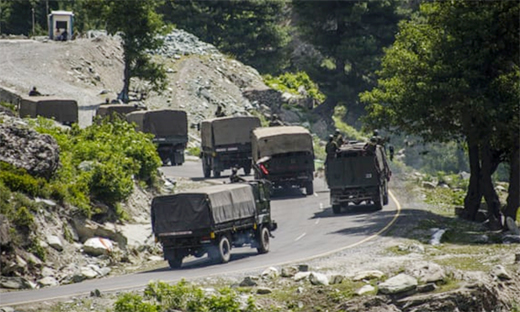
Helicopters, transport aircraft and routine sorties by fighter jets add to the turbulent atmosphere pervading the desolate mountain ranges.
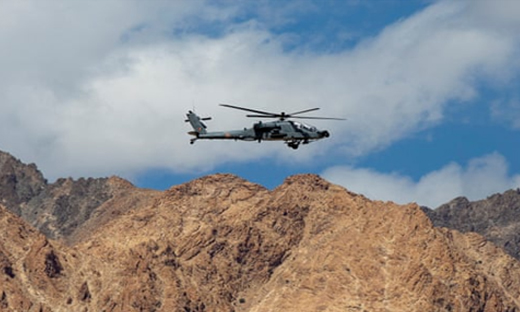
The Chinese have deployed a new lightweight 122-millimeter calibre wheeled howitzer besides a wheeled vehicle mounted HJ-10 anti-tank missile system.
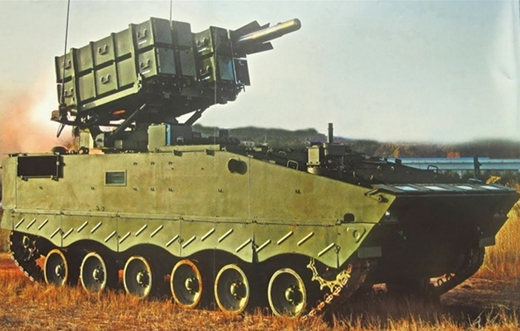
(HJ-10 Anti-tank missile system)
The Chinese Army recently commissioned a batch of vehicle-mounted PCL-181,a 155 millimetre wheeled howitzer.
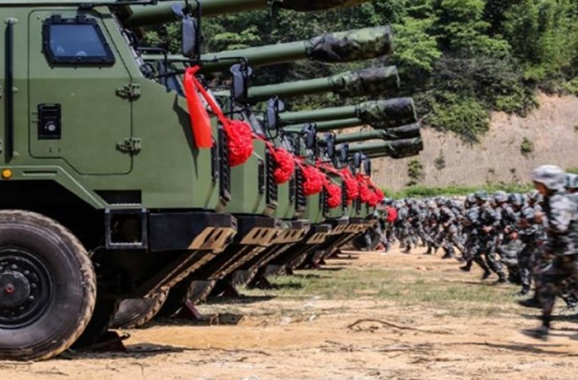
With the above new weaponry, the Chinese are conducting live-fire drills in the eco-fragile Himalayan mountain ranges.
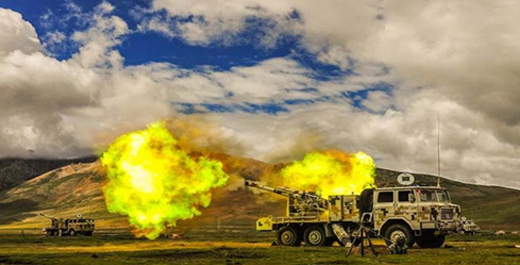
The drills featured anti-aircraft shooting and precision artillery strikes on Indian formations, missile installations, communication hubs, positions, bunkers and camps. Weapons used include Type 15 lightweight tanks and HJ-10 anti-tank missiles as well as PLZ-07A 122mm self-propelled howitzers and PHL-11 122mm self-propelled rocket launchers which were being deployed and used at high attitude for the first time.
“In the drill our forces overcame the harsh environment, closely coordinated and integrated air and land forces in modules, applied the tactics of whole-area joint attack and three-dimensional penetration to seize control, combining the artillery bombardment with precision sniping, as well as drone reconnaissance and strike,” said the Brigade Commander, Zhang Jialin.
The Himalayan mountain range is estimated to have been formed about 50 million years ago. Presently, India, Nepal, Bhutan, Myanmar, Pakistan, Afghanistan and China Occupied Tibet (COT), control different sectors of the over 2400 kilometre stretch of the Himalayas.
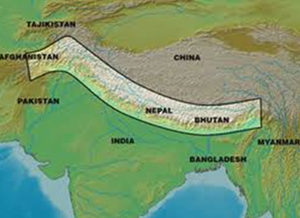 The Indian Himalayan Region (IHR) covers nearly 95 districts starting from the foothills in the south (Shivalik); the region extends to the Tibetan Plateau in the north (trans-Himalaya), and extends beyond Bhutan and touches Myanmar. The IHR is the source of fresh water for a large part of the Indian subcontinent, approximately estimated at around1,600,000 million m 3 of water annually for drinking, irrigation, and hydropower. An estimated 40 million of the population reside in this region.Apart from this, the IHR abounds in important medicinal herbs and shrubs.
The Indian Himalayan Region (IHR) covers nearly 95 districts starting from the foothills in the south (Shivalik); the region extends to the Tibetan Plateau in the north (trans-Himalaya), and extends beyond Bhutan and touches Myanmar. The IHR is the source of fresh water for a large part of the Indian subcontinent, approximately estimated at around1,600,000 million m 3 of water annually for drinking, irrigation, and hydropower. An estimated 40 million of the population reside in this region.Apart from this, the IHR abounds in important medicinal herbs and shrubs.
For the first time in its 50-million-year history, the Himalayas is likely to be subjected to intense bombardment by high-tech explosives and armaments. Will the fragile Himalayan mountain range be able to withstand the unprecedented bombardment that can occur between the two Asian giants?What will be the impact on the biosphere? Hardly any research has been done to assess the potential military impact on the Himalayan environment. What is certain is that any conflict will certainly cause overwhelmingly negative effects on the ecosystem structure and function.
In the book Communist China and Tibet by George Gingsburg & Michael Mathos, it is revealed that Chairman Mao firmly believed that “He who holds Tibet dominates the Himalayan piedmont; he who dominates the Himalayan piedmont threatens the Indian subcontinent; and he who threatens the Indian subcontinent may well have all of South-East Asia within his reach and all of Asia!” Chairman Mao therefore made annexation of Tibet as a key factor in Chinese expansionist policy. His words indicate the future expansionist design “Tibet is the palm we take over, then we go after five fingers-Ladakh, Nepal, Bhutan, Sikkim and Arunachal Pradesh”. The Chinese have started thrusting their fingers aggressively, is it not time to chop off the protruding hand?
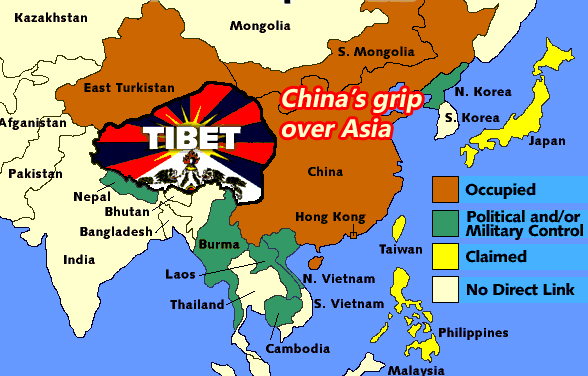
For world peace and blocking Chinese military aggrandisement it is imperative that all nations unite and dislodge China from Tibet. The continued occupation of Tibet acts as an impetus to invade the Himalayas and thereafter the Gangetic plain. The centrality of Tibet is restricted not just to Sino-India relations, but needs to be viewed from a global perspective. Most appropriately, the present Indian government under the leadership of Mr. Narendra Modi, is foiling the aggressive dream of Mao and his successors. It is just not going to be a cakewalk over the Himalayas for the Chinese.
However, this is no excuse for deficiencies in our intelligence gathering capabilities. Time and again India is caught napping and the enemy is repeatedly surprising us. Nations around the world will be reviewing our intelligence capabilities, and the laxity of our agencies will not be appreciated. Be it 1962, Kargil or Ladakh, why is it that repeated intelligence failures are occurring? Our resources and assets are reasonably sophisticated to give timely alerts and inputs about any mischievous endeavours. The only inference possible is that many are guilty of a lackadaisical approach and this is costing the nation very dearly. It does not require much common-sense to understand that the entire stretch of the Indo-China border and Indo-Pak border are a lacerated and festering wound that can aggravate at any time. Those who have been lax in the performance of their duties should be held accountable and there is an urgent need to revamp the Intelligence gathering machinery which is spread out among multiple agencies. That all of them were caught on the backfoot and were outmanoeuvred and outclassed by the enemy is a matter of deep concern. Amassing the borders now with soldiers and weaponry will be of no avail. The impact of the presence of over a lakh of soldiers, sophisticated missiles, explosives, rockets and mortars, on the fragile high-altitude topography is largely unknown. Further, in the event of a conflagration, the likelihood of earthquakes, breakup of the mountains and entire collapse are yet to be studied. India and China have blasted the Himalayan mountains to construct a network of roads, air-fields, tunnels, bridges and dams. Whether these manmade structures will crumble and contribute to the Armageddon? Seismological intelligence and assessment of consequences of a conflagration between the two warring nations need to be done by an international body of scientists, for, if the Himalayas tremble and disintegrate, the whole world will have to join the ensemble.
Related Article:
Part 1: THE ANGRY HIMALAYAS - String of pearls vs Garland of Opium
Part 2: The Angry Himalayas-Part II: Tibet Needs a Warrior - Monk or Dob-dobs
Part 3: The Angry Himalayas Part III: Opium Wars - How China Lost Vladivostok to Russia
Part 4: The Angry Himalayas - Part IV: Is It time for Opium War III?
Part 5: The Angry Himalayas: The Incredible Story of ‘Looty’ the Pekinese Toy - Dog
Part 6: The Angry Himalayas – Part VI: Eight Nation Alliance Crushes China in 1900
Part 7: The Angry Himalayas-Part 7: Will Modi make Xi’s ’China Dream’ into a ‘China Nightmare’?
Part 8: The Angry Himalayas Part-VIII: Proliferating Chinatowns - Threat to Global Security
 Dr. G. Shreekumar Menon IRS (Rtd) Ph.D: Former Director General of National Academy of Customs Indirect Taxes and Narcotics & Multi-Disciplinary School Of Economic Intelligence India; Fellow, James Martin Centre For Non Proliferation Studies, USA; Fellow, Centre for International Trade & Security, University of Georgia, USA; Public Administration, Maxwell School of Public Administration, Syracuse University, U.S.A.; AOTS Scholar, Japan. He can be contacted at shreemenon48@gmail.com
Dr. G. Shreekumar Menon IRS (Rtd) Ph.D: Former Director General of National Academy of Customs Indirect Taxes and Narcotics & Multi-Disciplinary School Of Economic Intelligence India; Fellow, James Martin Centre For Non Proliferation Studies, USA; Fellow, Centre for International Trade & Security, University of Georgia, USA; Public Administration, Maxwell School of Public Administration, Syracuse University, U.S.A.; AOTS Scholar, Japan. He can be contacted at shreemenon48@gmail.com
- China is winning the trade war without fighting
- Poll promises can become political nightmares
- While India sticks to death by hanging other execution methods vary across the world
- Spiking of drinks, a grave threat for students’ security
- Burden of drugs and substance use among university students in India
- Mangalore medic’s miracle in Bombay 1957
- Needed a national protocol for treatment of substance use disorders
- The Lingering Menace of Drug Abuse Among the Indian Youth—It’s Time for Action
- Need For ‘Students, Alcohol and Drugs’ survey
- New Synthetic Drugs Trapping Youth
- Mood Modifying Chips - Future of Drug Use
- Ramping up Indo-Bangla border security
- IITM- A premier educational Institution in a forest. What can we learn?
- Kashmir Bhavan in Bengaluru: A must visit place
- "MAI and I" Book of Angelic Emotions
- Draupadi Murmu - The New ’President of India’
- Anthony Ashram in the city grows a classic museum
- First College of Fisheries in India - A Golden Jubilarian
- Flushing Meadows - A Vintage Mansion
- The Colonel�s Bequest
- A Mangalorean PM and his RBI Governor Brother: The Extraordinary story of the Benegal Brothers
- There is no higher religion than Truth: Theosophical Society
- L�affaire - Ashu & Yiju of Mangalore
- Mangalore in Kowloon
- 1568 to 2018 AD: 450 years of Christianity in Mangaluru
- Vice President elect Naidu moves on from nadir to zenith, the phenomenal journey
- Embracing the Outdoors: How Heated Jackets Are Revolutionizing Cold Weather Activities
- Efficient and Sustainable Packaging Solutions with FIBCs
- The Hybrid Kilt Revolution | Where Tradition Gets Trendy
- Affordable Elegance | Embrace Style on a Budget with Cheap Kilts
- Unleashing Style and Functionality | Exploring Tactical Kilts
- Mangalore’s Heroic Lady marks 105th Birthday
- Santa the Christmas spirit
- Geriatric care: Mangalore strikes a fine balance
- The Don Who Made Two Empires to Clash
- CHITRAPUR SARASWATS - A Great Kanara Community
- Our new President Ram Nath Kovind’s significant journey to Rashtrapathi Bhavan
- Marriages made in heaven, big fat weddings made in India
- Eid insight - The giver of glad tidings
- CITY INFORMATION
- TRAVEL
- TOURIST INFORMATION
- HEALTH CARE
- MISCELLANEOUS




 Write Comment
Write Comment E-Mail To a Friend
E-Mail To a Friend Facebook
Facebook Twitter
Twitter  Print
Print 

